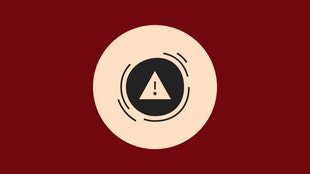This article is intended as a practical guide for sellers to address common product safety questions. Sellers are ultimately responsible for the safety and compliance of their products.
Friendly disclaimer: If you list products for sale on Etsy, you must comply with all federal, state, and local legal requirements and Etsy policies applicable to those products and product listings. This information provides an overview regarding non-exhaustive US requirements for educational purposes only, is subject to change over time, and is not legal advice. It is not intended to create, and receipt of it does not constitute, a lawyer-client relationship. The authors, Etsy, Inc. and Etsy Ireland UC disclaim all responsibility for any and all losses, damages, or causes of action that may arise or be connected with the use of or reliance on these materials. Requirements may vary depending on your location and where you make your products available. Please consult a licensed attorney in your area for legal assistance.
What should I consider when selling electrical or electronic products?
Many electrical or electronic products are sold online every day in Europe. However, the sellers of these products have a duty to make sure that the products are safe to use and comply with European Union law.
Before selling your product online through Etsy, you must consider all the possible risks that may be associated with your device. Ask yourself, “what are the risks a potential user could face?”. These may include electrocution, due to faulty wiring, or poisoning, due to hazardous paints.
The Directives that apply to electronic products depend on the characteristics of the product:
- The low voltage directive (LVD) applies to devices operating with an input or output voltage of between 50 and 1000 V for alternating current, and between 75 and 1500 V for direct current. Some examples of devices to which LVD applies are cables, household appliances, power supply units, etc.
- If the voltage is below 50 V for alternating current, or below 75 V for direct current, then the General Product Safety Directive (GPSD) and EMC applies.
- The Radio Equipment Directive (RED) applies to radio equipment. This means that devices which operate with a radio spectrum for communication purposes such as devices with Wi-Fi, Bluetooth, and other wireless devices, fall within the scope of this Directive.
What are my responsibilities as the seller?
If you are making products yourself, as the legal manufacturer of your product, you must affix a CE marking (UKCA in the UK) and hold a related declaration of conformity and technical file. This must be provided to authorities upon request. This file should include information on the product's design, function, instructions, tests, and safety.
If your suppliers are based outside of the EU, then you must get these documents from them. By law, if you import products to sell in the EU, you will be considered a manufacturer and be held to the same standard as any other producer unless you act as importer and your supplier as the legal manufacturer of the product.
You must also comply with any requirements which are specific to your product type. You can find details on these further in this article.
What if I am not based in the EU?
If you are located outside of the EU but wish to sell a CE marked product within any of the EU member states, then you must appoint a European Authorised Representative (EAR). An EAR will be responsible for holding all your documentation related to CE marking and your technical file. If there are any safety related incidents, then the authorities will contact your EAR not you. The EAR is the contact point in Europe for anyone that needs information about the product’s technical or regulatory details. The EAR must have an address in one of the EU Member states and their contact information must appear on the product’s packaging.
What if I’m based in UK?
Since Brexit, sellers in the UK are no longer subject to EU law. However, the UK has several similar regulations which often have identical requirements to their EU counterparts.
All EU regulations listed in this article will have a UK counterpart which you must follow if you are selling in the UK. The most important of these for electronic devices is The General Product Safety Regulations 2005 (GPSR) and The Electromagnetic Compatibility Regulations 2006 (EMC UK, Radio Equipment Regulation). This implies that non-UK sellers must appoint a UK Responsible Person if they want to place their products on the UK market, which is a different entity than the EU Authorised Representative.
What is Ecodesign and Energy Labelling?
Ecodesign are a set of requirements which are imposed on certain energy-using products to reduce their environmental impact. Find out if your product is subject to these requirements here. The exact requirements will depend on your product type.
Under the Ecodesign requirements, a framework for manufacturers to design their products in an energy efficient way is set out. In general, Ecodesign requires manufactures of products, such as lighting, to use less energy, emit less harmful substances and be suitable for reuse. If applicable, you must show that your product conforms with Ecodesign before you affix a CE marking.
The related Energy Labelling Regulation, requires manufactures of products which fall within the EU list to indicate their energy efficiency. Energy labelling ranks product from A to G depending on how much energy they consume. It is your obligation as a manufacturer to ensure that these ratings are visibly displayed on your products. All product which require energy labelling must be registered with the European Product Database for Energy Labelling (EPREL).
What are the requirements for selling hair dryers, extension cords, or seasonal lighting?
Hair Dryers
CE certification (or UKCA in the UK) of household appliances such as hair dryers generally must conform to two main regulations, the Electromagnetic Compatibility Directive (EMC) and the Low Voltage Directive (LVD). There are also standards for home appliances such as EMC is EN55014-1, EN55014-2, and the standard for home appliances LVD is EN60335-1.
Seasonal Lighting
When selling lighting in the EU you must ensure that your products fulfil all the requirements related to energy labelling, eco-design, safety and safe-disposal. These requirements can depend on the type of lighting that you are selling; office lighting is subject to different requirements to smaller LEDS. All lighting will be required to have a CE marking indicating its safety for the end user. If you are the manufacturer, then you must provide a declaration of conformity and a technical file for the product. You must ensure that your product has a Waste Electrical and Electronic Equipment Directive (WEEE) label outlining safe disposal and an energy label (ErP).
Selling seasonal lighting may offer unique risks as the quality of such products may be lower and therefore potentially more hazardous. As this type of lighting is frequently LED-based, you must ensure that they conform to the requirements of RoHs, the Low voltage directive (LVD), EMC and RED (for smart LED).
Can I sell individual lithium-ion batteries?
Individual lithium-ion batteries are prohibited for sale on Etsy, as stated in Etsy’s Prohibited Items Policy.
Additionally, the EU is introducing a new framework for batteries689337). The focus of this, as with much recent EU legislation, is on sustainability. Batteries can have a devastating impact on the environment if they are not properly disposed of. Lithium batteries are particularly concerning in this regard.
What should I consider if I sell vintage electrical or electronic products?
Regardless of the age of your electronic devices, you must ensure that all the requirements of the EU regulations relating to electronic devices are met. This means you must verify that, despite the product's age, there are no dangers that are going to affect the end user. You may want to ask yourself if the wiring is in safe working order, if the materials have paints or components have deteriorated over time, etc. You must ensure that your product will not negatively impact the end user or the environment during its life cycle.
General requirements
Some products do not fall neatly into one category or another, however, they must also be safe to use by EU consumers. To tackle this problem, the EU has the General Product Safety Directive (GPSD) regulation. This is a catch-all regulation intended to guarantee consumer safety for products which may not fall under any of the more specific regulations such as those discussed earlier in this article. The same requirements are covered under the UK’s GPSR.
If you believe that your product is not covered by any specific regulation, then you must apply GPSD requirements. A product is considered safe under these requirements when no risk is present to the user under normal or reasonably foreseeable circumstances of use. Considerations of safety should take into account the product itself as well as its packaging and the conditions of its use.
This means that you must only place products on the market which are safe to use. You must inform consumers of any risks associated with the product which you are selling; this may include any of the risks mentioned above such as electrocution or hazardous materials. Finally, you must be sure that any dangerous products can be traced so that they can be removed from the market if any new risks to the consumer arise.
For more information, read Selling Consumer Products in Europe under the General Product Safety Directive.
 Words by Etsy Staff
Words by Etsy Staff




